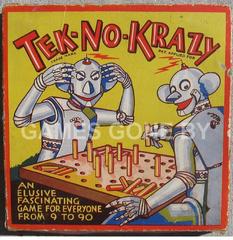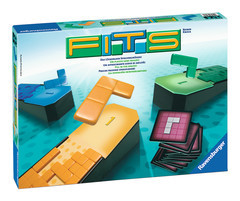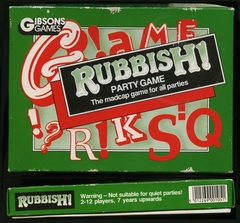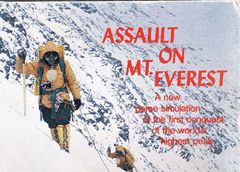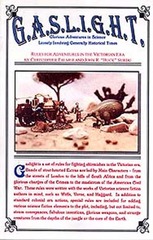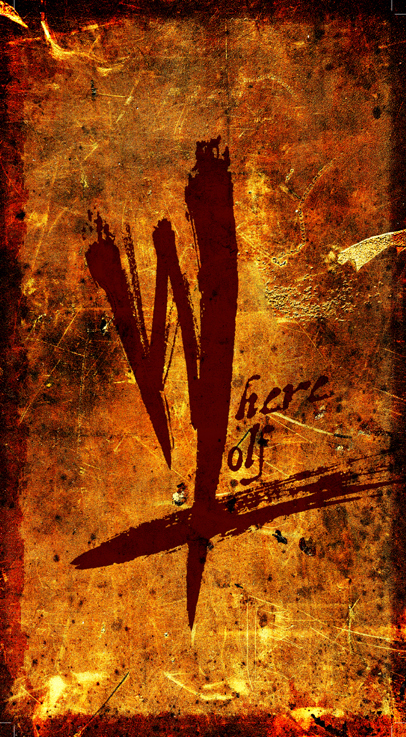
Wherewolf
-
Description
WHEREWOLF
A game by Christian Zoli.
A game of mystery, deduction and communication for 8 or more players.
A peaceful village in the Balkans has discovered werewolves in their midst!
The villagers must try to determine their identity and sent them to the stake before it’s too late, while the werewolves devour the helpless villagers, night after night.
The fight continues until one side is completely eliminated.
Will it be yours?GAME COMPONENTS
33 Role Cards
1 Turn Card
1 Icons Card
1 Biography Card
1 Game Rules bookletTHE GAME
Wherewolf is played over a series of alternating days and nights. During the day, the villagers gather together and try to figure out who the Werewolves are. They will then vote on whom they should burn at the stake. At night, the Werewolves will choose a victim to devour, while the Seer probes the souls of the villagers hoping to discover their nature.
In order to play, you will need a Moderator, who will guide the players and lead the game.
I’ll try to answer here to the most frequent questions I receive about my game.
Q – Is it another version of Mafia/Werewolf?
A – Yes, it is.
Q – Why another version? What are the differences between your version and the existing ones?
A – To answer properly I go back to a brief resume of this game history. I discovered the game in 2001 and it immediately amazed me for its great potential, but at the same time there were several things I didn’t like at all. Those I tried to improve.
First of all, I didn’t like when I was given a role that did absolutely nothing. I felt the “oh no, not again the peasant” quite disappointing. I know I could always participate in the discussions, but I felt it much more interesting and amusing when I was someone specific in the village and not just one of the many blank roles. I think anyone likes to feel that his contribute to the game is unique, so why not make it so! So I started to work on a set of roles where everyone could do something, or know something or somehow change the game in a way that only he could do.
This directly leads to the second main difference. I didn’t like when the game went like that:
“You are a wolf!”
“No, I’m not!”
“Yes, you are!”
“No, I’m not!”
When there are too many blank roles, often the game must go in a direction without any real reason and accusations are made and resolved more by sympathy and by the speakers’ ability than by logic and deduction. By making different roles for everyone involved, each of them with his own piece of the puzzle, I tried to create a web of hints, clues and informations so to make the game more based on a cause-effect chain of reasonings, maybe wrong reasonings because someone is lying, but reasonings anyway!About making all roles unique, there is a very important note.
As you may know, internet is full of new characters for mafia/werewolf, tons of them. The problem is that almost all of them are made the same way:
“This guy, at night, does this”.
This could work once or twice, but if you go on adding roles in this way, the night turn will become long and boring and the game will eventually collapse on itself. What I tried to do, in making all the roles, is creating new game engines, that add to the game spice and make it richer, but without weighting it down.
Just to make some examples: the Role Card raising during blind voting for the players who have abilities during that phase, or the secret hidden role for the three peasants that triggers only when they are attacked, or the one-way trust bond created by one player opening his eyes and the other raising his hand with his eyes closed.
These are only some of the new engines I introduced, but if you happen to play my version I think you will get what I mean.Third, I tried to make the game a little more structured. By specifying the End of Game Conditions, the Factions, and their corresponding Winning Conditions, and introducing some trait (like the Aura seen by the Seer, or the Mysticism), I tried to give the game some clearer rules and guidelines, which can also be used by the players to make their own variations.
Q – How did you resolve the problem of the first dead player that does nothing from then on?
A – I didn’t.
First of all, because if you resolve this, then you would have the problem of the second dead player doing nothing from then on.
Jokes apart, I don’t think it has to be solved, because it is entirely one of the aspects of the game. If you try to make dead people interact with the game, I think you are touching a very delicate mechanism that is part of what the game itself is based on. Call it the “Ten little Indians” effect, but the fact that the village is shrinking down IS the game and I think it should not be touched.
Anyway, there is one thing I noticed about it in my version of the game. When there a lot of “things happening” and reasonings, and deductions running, the game is much more interesting even if you are watching it from the outside. I have been addressed to the “first dead player” problem much more from outside gamers than from people testing and playing my version. After all, if the game is interesting enough you can just sit down and watch it like a good thriller, not so different from what the moderator does after all.
Q - How do you relate with the other versions around?
A - Very obliged! I got many ideas from them, some of them helped me to fix some problems I had with mine (one of the roles in Ultimate Werewolf gave me the hint to fix the Madman role I was working on since a lot of time! Thanks Ted! ^^), some others I just took the part I liked most and changed it to adapt to my ideas of the game (Juliet, for example, is inspired to Cupid from les Loups-Garous de Thiercelieux).
As I often say, I think this game has become in the years an open project and I really appreciate every idea, comment, suggestion or critic I receive.
If I come up with other frequent questions I receive I will post them here later.
Have a good game!
Christian Zoli
-
Details
Ages: 15 and upArtist: Enrico RambaldiDesigner: Christian ZoliFamily: Werewolf / MafiaPublisher: CZ Games, Raven DistributionYear: 2009


